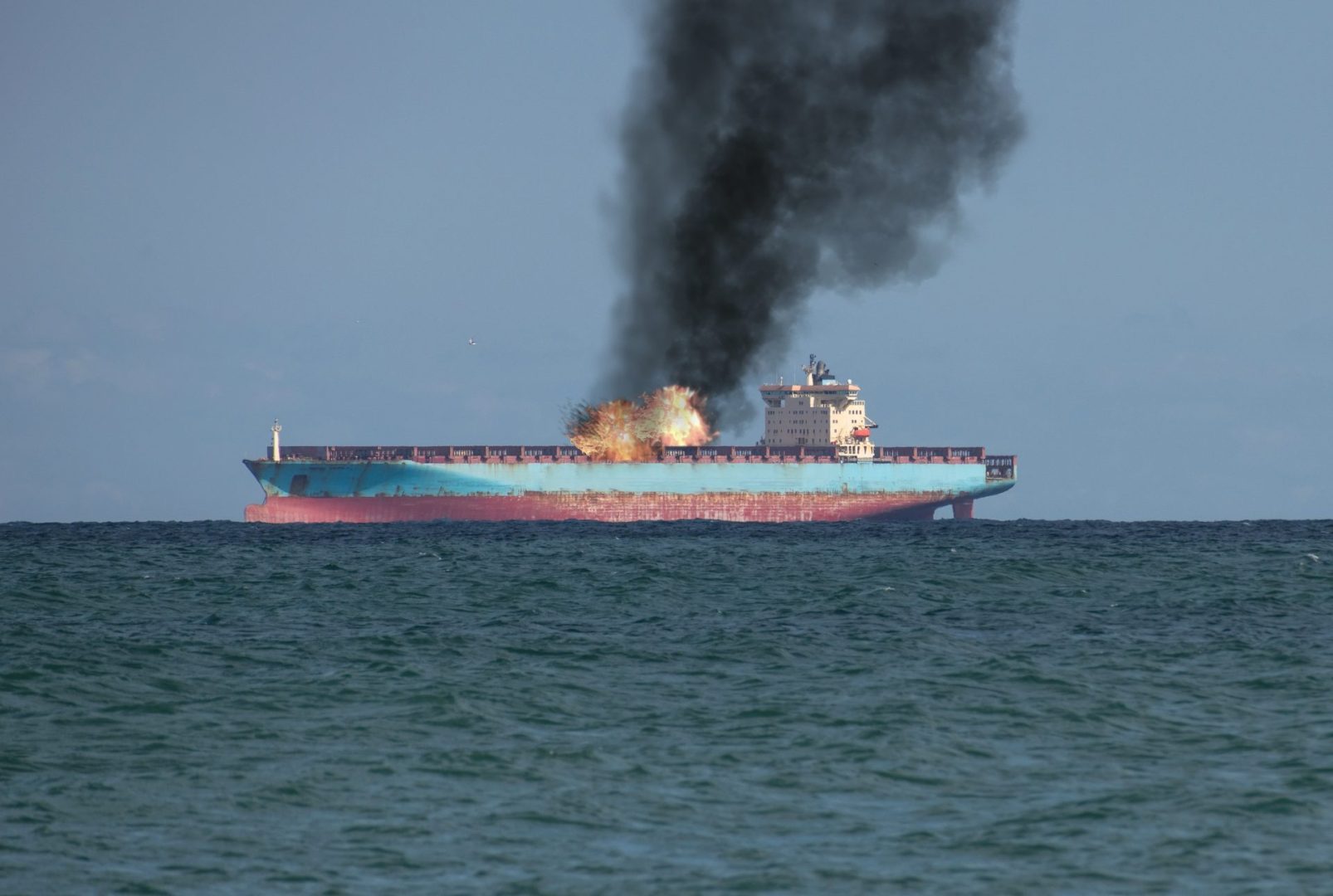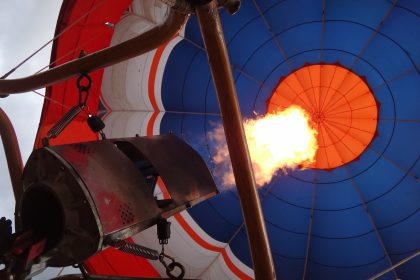A massive cargo vessel loaded with thousands of brand-new vehicles destined for Mexico has disappeared beneath the waves of the North Pacific Ocean, marking the dramatic conclusion to a weeks-long maritime disaster that began with an uncontrollable fire and ended in complete loss.
The Morning Midas, a 600-foot car carrier, finally succumbed to the depths on Monday after battling fire damage, severe weather conditions, and relentless water infiltration that proved too much for the compromised vessel. The ship now rests in approximately 16,404 feet of water in international waters off Alaska’s remote Aleutian Islands chain.
This maritime tragedy represents one of the largest vehicle losses at sea in recent years, with approximately 3,000 new cars and trucks now lying on the ocean floor instead of reaching their intended destination at a major Pacific port in Mexico. The financial and environmental implications of this disaster continue to unfold as salvage crews maintain a watchful presence over the wreckage site.
A fire that changed everything
The sequence of events leading to this catastrophic loss began on June 3, when the United States Coast Guard received a distress signal from the Morning Midas reporting an uncontrollable fire aboard the vessel. At that time, the ship was positioned roughly 300 miles southwest of Adak Island, navigating through some of the most remote waters in the North Pacific.
The blaze initially erupted at the ship’s stern, specifically targeting the deck area where electric vehicles were stored. Witnesses described seeing a massive plume of black smoke billowing from the rear section of the vessel, creating an ominous scene against the backdrop of the endless ocean. The fire’s location and intensity immediately raised concerns about the cargo’s role in fueling the flames.
Among the vehicle cargo were approximately 70 fully electric cars and around 680 hybrid vehicles, representing cutting-edge automotive technology that ironically may have contributed to the severity of the fire. Electric vehicle batteries, when compromised, can burn at extremely high temperatures and prove notoriously difficult to extinguish using traditional firefighting methods.
The 22 crew members aboard the Morning Midas fought valiantly to control the blaze, but their efforts proved insufficient against the rapidly spreading flames. As conditions deteriorated and the fire threatened to consume the entire vessel, the difficult decision was made to abandon ship and preserve human life above all else.
Dramatic rescue operation saves lives
The evacuation of the Morning Midas crew unfolded with remarkable precision despite the dangerous circumstances surrounding the burning vessel. All 22 crew members successfully deployed lifeboats and evacuated the compromised ship, demonstrating the effectiveness of maritime safety protocols and training procedures.
A nearby merchant marine vessel responded to the distress call and successfully rescued all crew members from their lifeboats, ensuring that no lives were lost despite the dramatic circumstances. The successful rescue operation stands as a testament to both the professionalism of the Morning Midas crew and the solidarity of the maritime community in responding to emergencies at sea.
The fact that no injuries occurred during this harrowing ordeal represents the single positive outcome from an otherwise devastating incident. Maritime safety experts often point to such successful evacuations as examples of how proper training and equipment can prevent tragedies from becoming even worse.
Salvage efforts and environmental concerns
Following the crew evacuation, London-based Zodiac Maritime, the ship’s management company, immediately mobilized salvage resources to address the crisis. A specialized salvage crew arrived at the scene within days of the initial fire, bringing with them equipment and expertise designed to combat maritime fires and prevent environmental damage.
However, the combination of fire damage, deteriorating weather conditions, and continuous water infiltration created an increasingly untenable situation for the disabled vessel. Despite the best efforts of salvage professionals, the Morning Midas continued to take on water while battling the effects of the fire that had already compromised its structural integrity.
The salvage operation highlighted the extreme challenges faced when dealing with large vessel fires in remote ocean locations. Limited resources, harsh weather conditions, and the sheer scale of the emergency combined to create nearly impossible working conditions for rescue teams.
Two specialized salvage tugs equipped with pollution control equipment remain positioned at the wreck site, maintaining constant vigilance for any signs of environmental contamination or floating debris. These vessels serve as the first line of defense against potential ecological damage from fuel spills, oil leaks, or other hazardous materials that may escape from the sunken vessel.
Environmental monitoring intensifies
Zodiac Maritime has demonstrated its commitment to environmental protection by deploying additional resources to monitor the wreck site. The company announced plans to send another specialized pollution response vessel to the location as an extra precautionary measure, acknowledging the serious environmental risks posed by the sunken cargo ship.
The depth at which the Morning Midas now rests, more than three miles below the surface, presents both challenges and opportunities for environmental protection efforts. While the extreme depth makes salvage operations virtually impossible, it also means that any potential pollutants will be released far from surface waters where they might cause immediate ecological damage.
Marine biologists and environmental scientists are closely monitoring the situation to assess any potential impact on ocean ecosystems. The remote location of the wreck site, hundreds of miles from the nearest land, may help limit environmental consequences, but ongoing surveillance remains crucial for detecting any emerging problems.
International shipping route concerns
The Morning Midas incident occurs against a backdrop of growing concerns about vehicle carrier safety, particularly regarding ships transporting electric and hybrid vehicles. The vessel had departed from Yantai, China, on May 26, following one of the busiest international shipping routes connecting Asian manufacturing centers with North American markets.
Recent maritime incidents involving vehicle carriers have prompted industry-wide discussions about fire prevention, crew training, and emergency response procedures. A 2023 incident involving a freighter carrying 3,000 automobiles, including nearly 500 electric vehicles, resulted in one death and multiple injuries when fire burned out of control for an entire week.
That earlier incident, which occurred while the vessel was traveling from Germany to Singapore, eventually required towing the ship to a Netherlands port for salvage operations. A Dutch safety board subsequently issued recommendations for improving emergency response procedures on major shipping routes, highlighting the growing challenges posed by modern vehicle cargo.
The electric vehicle factor
The presence of electric and hybrid vehicles aboard the Morning Midas has drawn particular attention from maritime safety experts who are increasingly concerned about the unique fire risks posed by lithium-ion batteries. These advanced battery systems, while environmentally friendly during normal operation, can present significant challenges when damaged or compromised.
Electric vehicle fires burn at extremely high temperatures and can reignite even after appearing to be extinguished, creating ongoing hazards for firefighting crews. Traditional ship firefighting systems, designed primarily for conventional fires, may prove inadequate when dealing with battery-related blazes.
The automotive industry’s rapid transition toward electric vehicles has created new challenges for shipping companies, port facilities, and emergency responders who must adapt their procedures to address these emerging risks. Training programs, equipment specifications, and safety protocols are all being reevaluated in light of changing cargo compositions.
Financial and logistical implications
The loss of the Morning Midas and its cargo represents a significant financial blow that will reverberate through multiple industries. The 3,000 vehicles now resting on the ocean floor were destined for Mexican consumers who were likely anticipating delivery of their new cars and trucks.
Insurance companies will face substantial claims related to both the vessel itself and its valuable cargo, while automotive manufacturers must determine how to replace the lost inventory and fulfill customer orders. The ripple effects of this disaster will likely impact supply chains, delivery schedules, and pricing structures across multiple markets.
Shipping companies operating similar routes are also reassessing their risk management strategies and insurance coverage in light of this incident. The growing frequency of vehicle carrier fires has already led to increased scrutiny from insurers and regulatory bodies worldwide.
The Morning Midas disaster serves as a stark reminder of the risks inherent in international shipping and the potential for single incidents to cause widespread disruption across global supply chains. As the maritime industry continues to adapt to changing cargo types and evolving safety challenges, this incident will likely influence future regulations, training requirements, and emergency response procedures for years to come.













